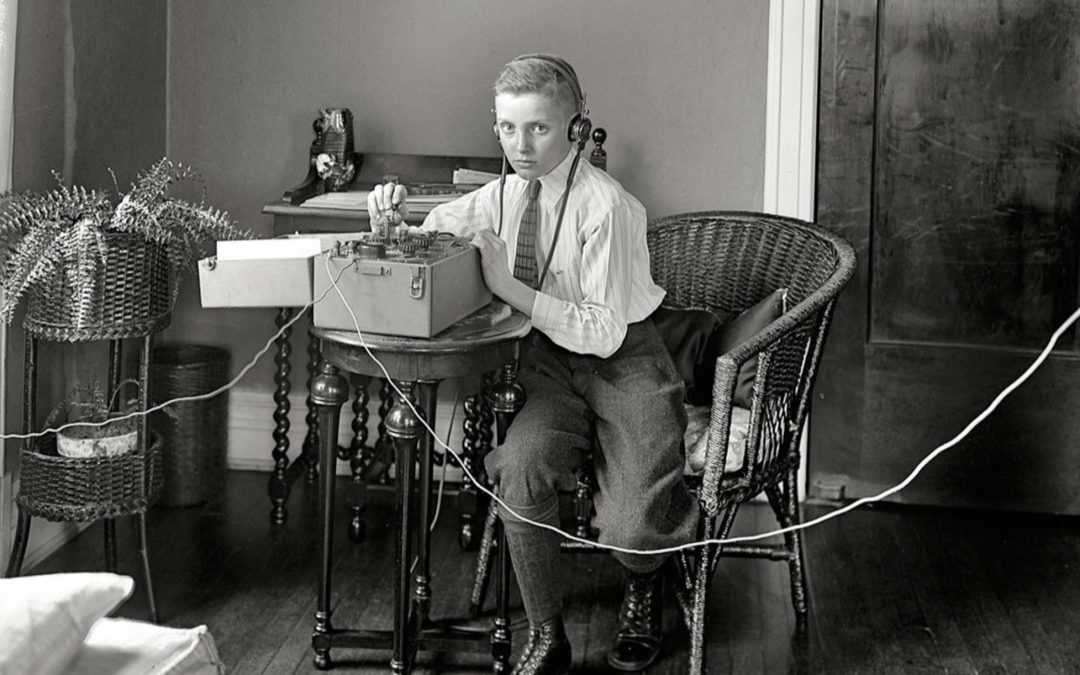During times of turmoil, communication is key!
That’s why podcasting has been so very useful to so many businesses during pandemic conditions. But I’ve had a lot of clients ask me for tips on how they can record sound easily themselves whilst we’re working from home. If that’s you, read on.
It’s pretty easy to record a podcast at home or remotely if you use these simple tips.
And the good news is, you and your guests probably have everything you need already.
Okay, so you may not have the world’s biggest equipment budget, a professional background in sound engineering or a handy studio in your spare room, but it’s still possible to record a podcast at home AND for it to be audible. The ideal situation with your podcast sound is for nobody to notice it’s a problem and that means ensuring there’s no obstruction to people hearing it clearly.
The goal of home recording is still to get the best possible sound in spite of the circumstances so that the listener can focus on what matters – the words! To keep this simple, I’ve broken it down into 3 simple steps. There’s more than one way of doing this, but here’s one that’s simple and effective even for people who aren’t used to working with audio, software or tech:
- Room
- Device
- User (yep, that’s you and your guests)
Recording at home needs the right room
I didn’t say the PERFECT room. And don’t worry, we won’t bore you with talk about sound waves. The fundamental thing to remember is that the bigger your room, the more echoey it will be.
Size & Space
Bigger rooms mean more echo. Go for the smallest room you can find, avoid high ceilings where possible. Avoid having too much space behind you too.
Furnishings and Objects
Go for a room that contains objects which will absorb sound, not bounce it back like a slap in the chops. This means soft surfaces and furnishings such as curtains, rugs and carpets. Bare walls will reflect more. See how it sounds when you record under a duvet compared to a big, high-ceilinged room with bare floorboards. You’ll get it!

Noise
If there’s a buzzing fridge, heavy traffic, open windows or a herd of buffalo stampeding a nearby staircase, do what you can to get away from them! Every room has its own kind of noise depending on what objects are in it. For this reason always record 10-30 seconds of what is called ‘room tone’, that’s basically just the sound of the room – even if it seems silent – so that the producer can isolate and clean up any background noise in post-production.
The Device
If you have a smartphone and can’t figure out that USB mic you bought off Amazon, never fear! Recording a podcast at home using a smartphone is totally possible with the multitude of apps available.
Smartphones
Most have a voice recorder or voice memos app free to download from the App Store. This allows you to use the mic at the bottom of your phone for recording. These mics are surprisingly good and often more reliable than USB microphones when the recording environment isn’t ideal or controllable. The other benefit of recording ‘locally’ this way rather than remotely is that you don’t have to worry about the internet signal dropping out or weird buffering sounds happening in the middle of that important conversation!
Headphones
Do the face-to-face interview using video conferencing software but make sure that both guest and interviewer are wearing headphones. This means you won’t get noise from the computer speakers or a delay being picked up on the smartphones.
Backup
Always hit record on your video conferencing software so you have a backup should anything go wrong with the local recordings. The quality isn’t as good but it’s better than nothing! Also always record 10 -20 seconds of ‘room tone’ before you start the interview. This may feel awkward as you both sit in silence but it allows the producer to isolate and fix unwanted sounds in post-production more easily.
The User
That means you and your guests. To record a podcast at home effectively, you need to get the right position and technique for using your mic (or smartphone in this case!)
The Right Distance

If you hold the mic too close your sounds might record too loudly and distort. Some smartphone apps will have a level meter so you can see how loud it is. If it’s red, you’re too close! A good rule of thumb is to hold the mic around 5 inches away. If you are a loud speaker you might want to give it a bit more space. Have a test beforehand and then listen back to it on headphones if you’re worried.
The Right Position
Avoid pointing the microphone directly at your mouth. If breath coming out of your mouth hits the mic directly it can make unpleasant sounds – on plosives for example. It’s best to point the mic to your chin or nose instead. Once you’re happy, don’t forget to talk into it. If you move your head around and don’t follow the mic, it won’t pick you up so well!
So there it is! Your top three tips for recording a podcast at home. I hope it’s helpful to you, whether you’re a guest on an upcoming programme, or looking to record something yourself. These times may not be perfect, but there’s always a solution to your audio woes!
If you need any help on recording your podcast at home, Podcast Pioneers is here and happy to help. We do planning, development, creation and design for your marketing and advertising campaign too, so give us a call if you want to take your podcasting plans to the next level.

